BACK
Curator’s Incubator Program @ Museum-Radical Forms of Writing

The group exhibition Radical Forms of Writing first unfolds an ancient fable, a fable about the conflict between writing and the production of images.
While writing holds multiple definitions, the discussions of Czech-born philosopher Vilem Flusser(1920–1991) about writing might offer a solid framework for thinking. In Flusser’s opinion, writing is a gesture of digging, of scratching. It might be easier to understand the origin of writing if we think about oracle bone script in China or cuneiform script in Mesopotamia. The act of scratching or tearing seems to be an act of depletion (the removal of something); on the other hand, it can be seen as a process of exchange. Knowledge and mind propel the act of writing through the force of engraving; the stronger the force, the deeper the inscription. Pivoting around the gesture of writing — or we could call it “the gesture of text,” in other words, the aforementioned act of digging, scratching, and exchange — this exhibition examines how in the gesture of writing these different spiritual forces reinterpret memory and history.
As a way of expression that is relatively slow and laborious, writing in terms of how it is produced, is involved with more mental and physical effort, albeit oft in vain. And the rapid transporting of the contemporary image — production, reproduction, circulation, and consumption — facilitates the propagation of perception. On the one hand, it democratizes how we see what we see, entitling everyone to visual storytelling. On the other hand, it might cost people the opportunity to think, and to delve into the human mind and thought process behind the image. This is not to say that this exhibition is touted as a revolution to resurrect writing. On the contrary, writing as a way of logical thinking, has always been an internal machine that drives human survival, and has been never forgotten. The constant inscribing and digging aim not only to conceive or excavate a narrative (in order to defythe flow of the grand narrative), but also to flee the tenacious oppression of reality.
This exhibition comprises a diverse body of work by HU Wei-Yi (China), TENG Chao-Ming (Taiwan), CHIN Cheng-Te X YANG Yeh (Taiwan), CHANG Chia-Che (Taiwan), Aida Silvestri (UK), and Tim Youd (US). In their respective means of expression, these artists take writing as a defensive weapon in response to rapid production and consumption (exhaustion) in contemporary society. Their innate and intuitive urges and wants manifest themselves in the artists’ re-programming of those fleeting memories, both collective and individual. This danger that lurks behind rapid production and consumption, when seen in light of the relationship between text and image, refers not only to the dizzying circulation of images in the digital age, but more essentially, to how the transporting of images conceals, obscures, even tampers with historical memory. However, rather than to say image and text exist in a relationship of conflict and contradiction, one should consider them to be a paradox module where no perpetual confrontation subsists. Therefore, the transporting of images, in this particular context, could result from the fabrication of words, and engender new images in new imagination. In terms of the production of imagery and the construction of ideology, this vigorous transporting of images could be seen as the invisible hand behind the capitalism-induced illusions of happiness. The default critical underpinnings of this exhibition are thus based upon this formula: circulation and accumulation of capital —> consumption and illusion of images —> rebellion of writing consciousness.
Curator:LAI Chun-Chieh
Date:2017.04.29- 2017.06.25
Opening:04.29 15:00

Even This Will Pass Henok
Even This Will Pass Henok
Aida Silvestri

Even This Will Pass Saba
Even This Will Pass Saba
Aida Silvestri

The Contract Regarding Proto_Hanzi Radical 9 _1
The Contract Regarding Proto_Hanzi Radical 9 _1
CHANG Chia-Che

The Contract Regarding Proto_Hanzi Radical 9 _2
The Contract Regarding Proto_Hanzi Radical 9 _2
CHANG Chia-Che

Pulp Landscape 1_1
Pulp Landscape 1_1
HU Wei-Yi

Pulp Landscape 1_2
Pulp Landscape 1_2
HU Wei-Yi

EvanConnell-MrsBridge
EvanConnell-MrsBridge
Tim Youd

Untitled
Untitled
Tim Youd

